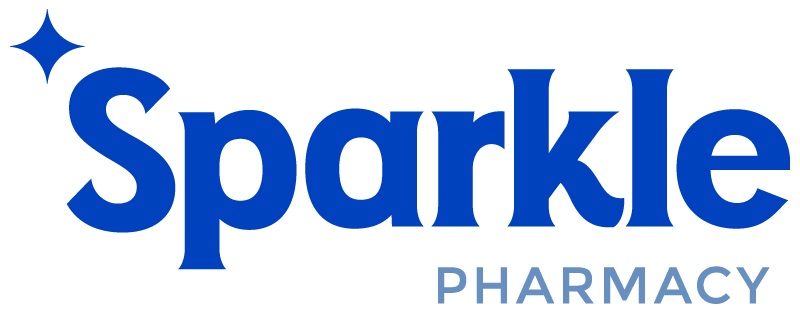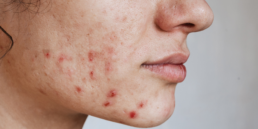Acne, a common skin condition that affects most adolescents and young adults, presents as blackheads, whiteheads, pimples and cysts. It occurs when pores become clogged with dead skin cells, and may be accompanied by a bacterial infection.
While acne usually appears on the face, it can also affect other areas such as the chest, back and upper arms. Severe acne, and picking or squeezing pimples can result in permanent scarring.
CAUSES AND TRIGGERS
Acne often starts at puberty and can last 5 to 10 years. Occasionally, it can continue into adulthood. Some women may notice
that their acne flares up in the days leading up to their monthly period.
Contrary to popular belief, acne is not caused by dirty skin, eating chocolate or greasy foods. Some factors, however, may
promote breakouts or worsen acne, including:
- Hormone fluctuations
- Certain cosmetic products
- Stress
- Repeated friction (e.g., sports helmet, music instrument, etc.)
- Picking or squeezing pimples
- Overwashing
- Hair in close contact with the face
Genetics may also explain why certain individuals develop acne. In fact, if either parent had acne, their children are more likely to develop acne as well. Lastly, certain medications, such as oral corticosteroids, certain contraceptive pills and some medications used to treat epilepsy, can cause acne.
TREATMENT
Mild acne can be treated with over-the-counter medication such as benzoyl peroxide (e.g., Benzagel). More severe cases require a prescription from a medical professional. Sometimes, a combination of several medications is recommended. Below are some tips to help optimize treatment:
- Apply product to the entire affected area, not just individual pimples.
- Start with a lower concentration and apply at night to improve tolerance.
- Use a non-comedogenic moisturizer (e.g., CeraVe) at the first sign of dryness. Non-comedogenic products are less likely to clog your pores.
- Test tolerance by applying a small amount of product on a small area, or apply the medication every second night for a few days before using the recommended dose.
When starting a treatment prescribed by a doctor, acne may worsen, and it may take a few weeks before any improvement is noted. For best results, it is important to take or apply treatment regularly and for as long as recommended.
In addition to prescribed treatments, here are some things that may help reduce the frequency and intensity of acne flare ups:
- Wash your face twice daily with a mild cleanser (e.g., Cetaphil). Avoid cleansing towelettes that contain alcohol or acetone.
- Wash skin with warm water instead of hot water and avoid overwashing.
- Rinse skin thoroughly after washing.
- Avoid exfoliants and rough towels.
- Do not pick or squeeze pimples.
- Avoid excessive use of make-up.
- Avoid using irritating products that contain parabens or fragrance.
- Avoid friction (e.g., wearing a sports helmet, music instrument, etc.).
- Opt for beauty products that are oil-free, non-comedogenic and non-acnegenic.
- Always use sunscreen that does not clog pores. If the medication used to treat acne contains benzoyl peroxide, apply the sunscreen during the day and the medication at bedtime.
WHEN SHOULD I SEE A MEDICAL PROFESSIONAL?
- If you have a significant amount of pimples or pustules.
- If you think your acne may be the result of an underlying medical condition or caused by medication you are taking.
- If you do not see any improvement after using an over-the-counter medication for 6 to 8 weeks.
- If you notice a sudden change in the appearance or amount of pimples.
FOR MORE INFORMATION:
Canadian Dermatology Association
Free delivery on prescriptions and medical supplies.
We offer free local delivery, curbside pick-up, and Canada wide shipping.

